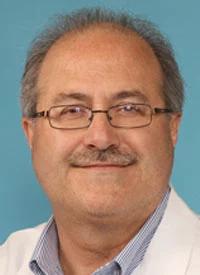Article
Ramucirumab/Pembrolizumab Produces Encouraging ORR in Recurrent or Metastatic HNSCC
Author(s):
The addition of ramucirumab to pembrolizumab elicited an encouraging response rate when used in the frontline treatment of patients with recurrent or metastatic head and neck squamous cell carcinoma.
Douglas R. Adkins, MD

The addition of ramucirumab (Cyramza) to pembrolizumab (Keytruda) elicited an encouraging response rate (ORR) when used in the frontline treatment of patients with recurrent or metastatic head and neck squamous cell carcinoma (HNSCC), according to data from a phase 1/2 trial (NCT03650764).1
Results, which were presented during the 2021 SITC Annual Meeting, showed that among those with a PD-L1 combined positive score (CPS) of 0 or higher (n = 33), the ORR was 64%; 5 of these patients had stable disease (SD) and 7 experienced progressive disease (PD).
Moreover, in 28 patients with a PD-L1 CPS of 1 or higher, the doublet produced an ORR of 64%, with 3 patients achieving SD and 7 experiencing PD. In 15 patients with a PD-L1 CPS of 20 or higher, the ORR was 60% with ramucirumab plus pembrolizumab; 2 patients had SD and 4 experienced PD. Finally, in the 5 patients with a PD-L1 CPS of 0, the ORR with the doublet was 60%, with 2 patients achieving SD.
“Fourteen patients remain on treatment at this analysis. Median follow-up, 8.3 months, is immature for duration of response [DOR], progression-free survival [PFS], and overall survival [OS] analyses,” lead study author Douglas R. Adkins, MD, of Washington University School of Medicine, Siteman Cancer Center, and colleagues, wrote in the poster presentation on the findings.
VEGF is a key mediator or angiogenesis and resistance to immunotherapy, and it is known to be overexpressed in HNSCC. Ramucirumab is a potent, selective inhibitor of VEGF ligand–induced activation of VEGFR-2 and angiogenesis. Previously, pembrolizumab received regulatory approval for use in the first-line treatment of patients with recurrent or metastatic HNSCC after demonstrating an ORR of 17%, a median DOR of 22.6 months, a median PFS of 2.3 months, and a median OS of 11.5 months in patients with a PD-L1 CPS of 0 or higher.
Based on prior findings, investigators hypothesized that combined inhibition of VEGFR2 and PD-1 would prove to be more effective than PD-1 inhibition alone. They set out to evaluate this further in the phase 1/2 trial, which enrolled patients with incurable recurrent or metastatic HNSCC, limited to oropharynx, larynx, oral cavity, and hypopharynx sub-sites.
To be eligible for enrollment, patients also needed to have a PD-L1 CPS of 0 or higher, an ECOG performance status between 0 and 2, and acceptable vital organ function. Patients with active autoimmune disease were excluded.
In the phase 1 portion of the research, ramucirumab was evaluated at the following dose levels (DLs): 10 mg/kg, 8 mg/kg, and 6 mg/kg every 3 weeks in 3 patients. Pembrolizumab was examined at a dose of 200 mg every 3 weeks. The recommended phase 2 dose (RP2D) was defined as the highest DL at which 1 or fewer of 3 patients experienced a dose-limiting toxicity (DLT) during the first cycle. Because no DLTs were observed at the 10-mg/kg DL, it was determined to be the RP2D for ramucirumab.
A total of 37 patients were enrolled to the phase 2 portion of the trial, and 33 of these patients were determined to be evaluable for the primary end point of ORR after having undergone at least 1 tumor response assessment. All evaluable patients were given the RP2D of ramucirumab in combination with pembrolizumab. If the ORR achieved with the doublet proved to be 13% or less, the study would not meet its primary end point.
Among the 33 evaluable patients, the median age was 64 years (range, 57-70), and 29 patients were male. Nineteen patients had a history of smoking, 17 patients had an ECOG performance status of 0, and 16 had a status of 1. The oropharynx (n = 14) and oral cavity (n = 14) were the most common primary disease sites. Additionally, the larynx and hypopharynx were the primary disease sites in 4 patients and 1 patient, respectively.
Regarding PD-L1 CPS, 15 patients had a CPS of 20 or higher, 13 had a CPS between 1 and 19, and 5 had a CPS of 0. Moreover, 9 patients did not receive prior curative-intent systemic therapy; 10 patients received this treatment within 6 months before the trial, and 14 patients had received this more than 6 months before the trial.
No unexpected safety concerns were identified, according to the study authors.
Reference
- Adkins DR, Ley JC, Jacobs MT, et al. Ramucirumab in combination with pembrolizumab as first-line treatment for recurrent or metastatic head and neck squamous-cell carcinoma: a phase 1-2 trial. J Immunother Cancer. 2021;9. doi:10.1136/jitc-2021-SITC2021.358









